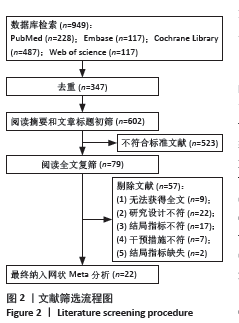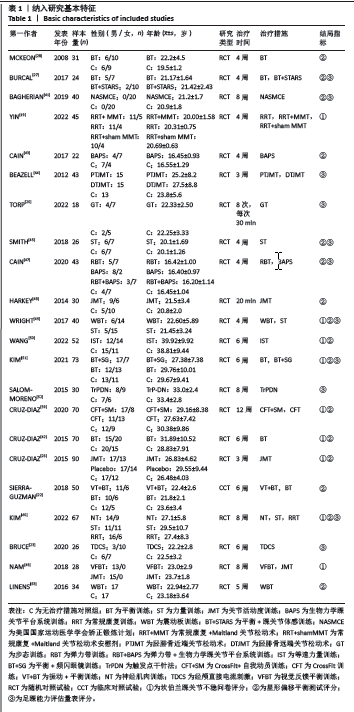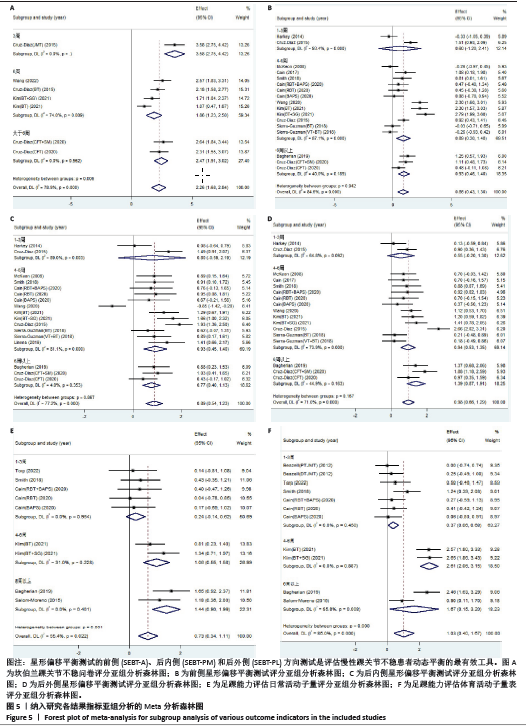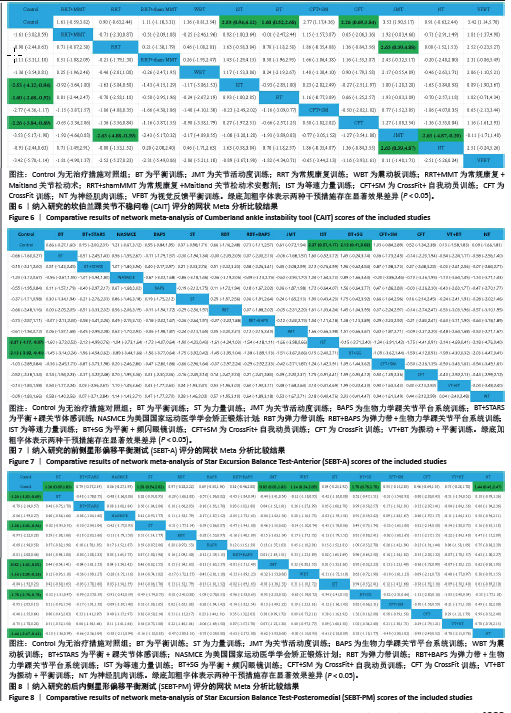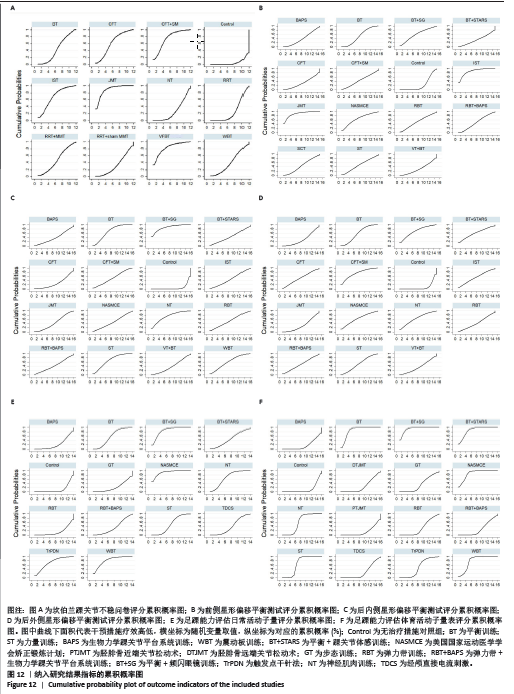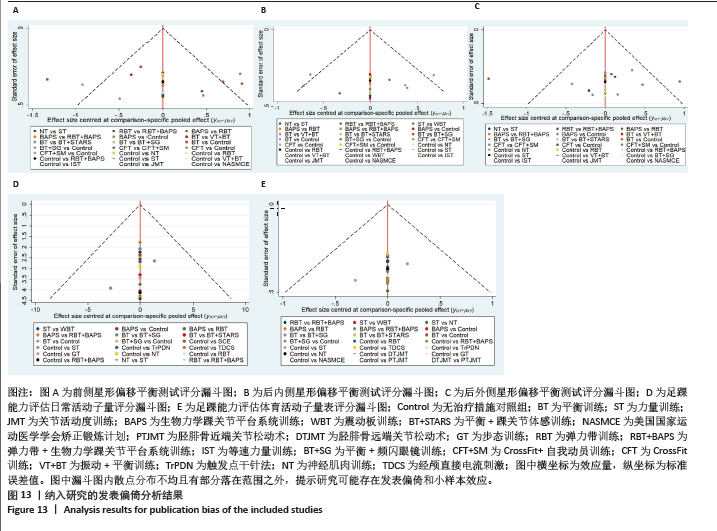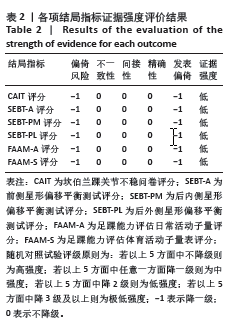[1] HOOTMAN JM, DICK R, AGEL J. Epidemiology of collegiate injuries for 15 sports: summary and recommendations for injury prevention initiatives. J Athl Train. 2007;42(2):311-319.
[2] NELSON AJ, COLLINS CL, YARD EE, et al. Ankle injuries among United States high school sports athletes, 2005-2006. J Athl Train. 2007;42(3):381-387.
[3] 苏玉莹,李卫,石煜,等.不同运动干预改善慢性踝关节不稳症状和动态平衡能力的元分析[J].中国组织工程研究,2024, 28(32):5217-5224.
[4] 王子龙,孟昕,张芷棋,等.功能性踝关节不稳男性下蹲跳过程中下肢的生物力学特征[J].中国组织工程研究,2025, 29(3):478-485.
[5] SOBOROFF SH, PAPPIUS EM, KOMAROFF AL. Benefits, risks, and costs of alternative approaches to the evaluation and treatment of severe ankle sprain. Clin Orthop Relat Res. 1984;(183):160-168.
[6] HUBBARD TJ, KRAMER LC, DENEGAR CR, et al. Correlations among multiple measures of functional and mechanical instability in subjects with chronic ankle instability. J Athl Train. 2007;42(3):361-366.
[7] WITCHALLS J, BLANCH P, WADDINGTON G, et al. Intrinsic functional deficits associated with increased risk of ankle injuries: a systematic review with meta-analysis. Br J Sports Med. 2012;46(7):515-523.
[8] GRIBBLE PA, DELAHUNT E, BLEAKLEY C, et al. Selection criteria for patients with chronic ankle instability in controlled research: a position statement of the International Ankle Consortium. J Orthop Sports Phys Ther. 2013;43(8):585-591.
[9] TSIKOPOULOS K, MAVRIDIS D, GEORGIANNOS D, et al. Does multimodal rehabilitation for ankle instability improve patients’ self-assessed functional outcomes? A Network Meta-analysis. Clin Orthop Relat Res. 2018;476(6):1295-1310.
[10] 尹贻锟,王佳林,伍朝明,等.关节松动治疗慢性踝关节不稳功能恢复的荟萃分析[J].中国组织工程研究,2022,26(33): 5407-5412.
[11] 何伟,梁吉东.踝关节融合术联合富血小板血浆注射治疗足踝创伤性关节炎临床疗效[J].山西医药杂志,2022,51(21):2447-2449.
[12] 贾光辉,方永刚,王翔宇.持续被动训练对慢性踝关节外侧不稳患者术后踝关节功能恢复的影响[J].中华物理医学与康复杂志,2020,42(7):648-650.
[13] 纵华琛,姜财,郭进华,等.本体感觉训练方式在慢性踝关节不稳的治疗进展[J].中国康复,2023,38(11):697-700.
[14] 任艺,王蕊,章耀华.本体感觉神经肌肉促进技术联合神经肌肉电刺激对慢性踝关节不稳的效果[J].中国康复理论与实践,2023,29(7):750-755.
[15] 苏玉莹,彭亮,李卫,等.整合性神经肌肉训练对慢性踝关节不稳康复与预防的研究进展[J].中国体育科技,2023,59(7): 47-52.
[16] 于歌,王璐,陈亚平.全身振动训练对慢性踝关节不稳姿势稳定性影响的Meta分析[J].中国康复理论与实践,2023,29(4): 423-432.
[17] HAN J, LUAN L, ADAMS R, et al. Can therapeutic exercises improve proprioception in chronic ankle instability? A systematic review and network meta-analysis. Arch Phys Med Rehabil. 2022;103(11):2232-2244.
[18] TSIKOPOULOS K, MAVRIDIS D, GEORGIANNOS D, et al. Efficacy of non-surgical interventions on dynamic balance in patients with ankle instability: a network meta-analysis. J Sci Med Sport. 2018;21(9): 873-879.
[19] YIN Y, YU Z, WANG J, et al. Effectiveness of the rehabilitation training combined with maitland mobilization for the treatment of chronic ankle instability: a randomized controlled trial. Int J Environ Res Public Health. 2022;19(22):15328.
[20] TORP DM, THOMAS AC, HUBBARD-TURNER T, et al. Effects of gait training with auditory biofeedback on biomechanics and talar cartilage characteristics in individuals with chronic ankle instability: a randomized controlled trial. Gait Posture. 2022;95:1-8.
[21] 宝金才,张秀花,王志,等.应用BTE Primus RS和三维步态分析技术治疗踝关节功能障碍[J].湖南师范大学学报(医学版),2018,15(5):55-59.
[22] SIERRA-GUZMAN R, JIMENEZ-DIAZ F, RAMIREZ C, et al. Whole-body-vibration training and balance in recreational athletes with chronic ankle instability. J Athl Train. 2018;53(4):355-363.
[23] BRUCE AS, HOWARD JS, VAN WH, et al. The effects of transcranial direct current stimulation on chronic ankle instability. Med Sci Sports Exerc. 2020;52(2):335-344.
[24] 王宝峰,肖松林,张希妮,等.经颅直流电刺激联合运动干预对运动能力影响的研究进展[J].体育科研,2022,43(1):21-27.
[25] HUTTON B, SALANTI G, CALDWELL DM, et al. The PRISMA extension statement for reporting of systematic reviews incorporating network meta-analyses of health care interventions: checklist and explanations. Ann Intern Med. 2015; 162(11):777-784.
[26] CRUZ-DÍAZ D, LOMAS VR, OSUNA-PéREZ MC, et al. Effects of joint mobilization on chronic ankle instability: a randomized controlled trial. Disabil Rehabil. 2015; 37(7):601-610.
[27] BURCAL CJ, TRIER AY, WIKSTROM EA. Balance training versus balance training with stars in patients with chronic ankle instability: a randomized controlled trial. J Sport Rehabil. 2017;26(5):347-357.
[28] MCKEON PO, INGERSOLL CD, KERRIGAN DC, et al. Balance training improves function and postural control in those with chronic ankle instability. Med Sci Sports Exerc. 2008;40(10):1810-1819.
[29] HIGGINS JP, ALTMAN DG, GøTZSCHE PC, et al. The Cochrane Collaboration’s tool for assessing risk of bias in randomised trials. BMJ. 2011;343:d5928.
[30] DE OLIVEIRA PCA, DE ARAÚJO TAB, MACHADO D, et al. Transcranial direct current stimulation on parkinson’s disease: systematic review and meta-analysis. Front Neurol. 2022;12:794784.
[31] CUMPSTON M, LI T, PAGE MJ, et al. Updated guidance for trusted systematic reviews: a new edition of the cochrane handbook for systematic reviews of interventions. Cochrane Database Syst Rev. 2019;10(10):ED000142.
[32] 刘壮,高奉,朱婷,等.减重训练对前交叉韧带重建术后患者临床疗效的系统评价与Meta分析[J].体育科学,2023,43(3): 78-88, 97.
[33] 郝莹,陈卓.抗阻运动提升老年人下肢肌肉力量及功能状态的网状Meta分析[J].中国循证医学杂志,2024,24(2):175-182.
[34] ZHANG X, JING F, LIU Y, et al. Effects of non-invasive brain stimulation on walking and balance ability in Parkinson’s patients: a systematic review and meta-analysis. Front Aging Neurosci. 2023;14:1065126.
[35] 尹润宇,杨东元,王世坤,等.补肾活血类中成药治疗膝骨性关节炎的有效性和安全性网状Meta分析[J].中草药, 2023,54(13):4266-4277.
[36] 邓通,汪洋,黄笛,等.临床实践指南制订方法——GRADE方法理论篇[J].中国循证心血管医学杂志,2018,10(12): 1441-1445,1449.
[37] 王琪,王建成,潘蓓,等.网状Meta分析证据质量分级:GRADE方法学前沿与进展[J].中国循证医学杂志, 2020,20(8): 979-985.
[38] 王贺,韩靓,阚梦凡,等.电刺激治疗脑卒中后肩手综合征有效性的系统评价与Meta分析[J].中国康复理论与实践,2023, 29(9):1048-1056.
[39] CRUZ-DIAZ D, HITA-CONTRERAS F, MARTINEZ-AMAT A, et al. Ankle-joint self-mobilization and crossfit training in patients with chronic ankle instability: a randomized controlled trial. J Athl Train. 2020;55(2): 159-168.
[40] KIM KM, ESTEPA-GALLEGO A, ESTUDILLO-MARTíNEZ MD, et al. Comparative effects of neuromuscular- and strength-training protocols on pathomechanical, sensory-perceptual, and motor-behavioral impairments in patients with chronic ankle instability: randomized controlled trial. Healthcare (Basel). 2022;10(8):1364.
[41] BAGHERIAN S, RAHNAMA N, WIKSTROM EA. Corrective exercises improve movement efficiency and sensorimotor function but not fatigue sensitivity in chronic ankle instability patients: a randomized controlled trial. Clin J Sport Med. 2019;29(3):193-202.
[42] CRUZ-DIAZ D, LOMAS-VEGA R, OSUNA-PEREZ MC, et al. Effects of 6 weeks of balance training on chronic ankle instability in athletes: a randomized controlled trial. Int J Sports Med. 2015;36(9):754-760.
[43] CAIN MS, GARCEAU SW, LINENS SW. Effects of a 4-week biomechanical ankle platform system protocol on balance in high school athletes with chronic ankle instability. J Sport Rehabil. 2017;26(1):1-7.
[44] BEAZELL JR, GRINDSTAFF TL, SAUER LD, et al. Effects of a proximal or distal tibiofibular joint manipulation on ankle range of motion and functional outcomes in individuals with chronic ankle instability. J Orthop Sports Phys Ther. 2012;42(2): 125-134.
[45] SMITH BI, CURTIS D, DOCHERTY CL. Effects of hip strengthening on neuromuscular control, hip strength, and self-reported functional deficits in individuals with chronic ankle instability. J Sport Rehabil. 2018;27(4):364-370.
[46] NAM SM, KIM K, LEE DY. Effects of visual feedback balance training on the balance and ankle instability in adult men with functional ankle instability. J Phys Ther Sci. 2018;30(1):113-115.
[47] CAIN MS, BAN RJ, CHEN YP, et al. Four-week ankle-rehabilitation programs in adolescent athletes with chronic ankle instability. J Athl Train. 2020;55(8):801-810.
[48] HARKEY M, MCLEOD M, VAN SA, et al. The immediate effects of an anterior-to-posterior talar mobilization on neural excitability, dorsiflexion range of motion, and dynamic balance in patients with chronic ankle instability. J Sport Rehabil. 2014;23(4):351-359.
[49] WRIGHT CJ, LINENS SW, CAIN MS. A randomized controlled trial comparing rehabilitation efficacy in chronic ankle instability. J Sport Rehabil. 2017;26(4): 238-249.
[50] WANG B, ZHANG X, ZHU F, et al. A randomized controlled trial comparing rehabilitation with isokinetic exercises and Thera-Band strength training in patients with functional ankle instability. PLoS One. 2022;17(12):e0278284.
[51] KIM KM, ESTUDILLO-MARTíNEZ MD, CASTELLOTE-CABALLERO Y, et al. Short-term effects of balance training with stroboscopic vision for patients with chronic ankle instability: a single-blinded randomized controlled trial. Int J Environ Res Public Health. 2021; 18(10):5364.
[52] SALOM-MORENO J, AYUSO-CASADO B, TAMARAL-COSTA B, et al. Trigger point dry needling and proprioceptive exercises for the management of chronic ankle instability: a randomized clinical trial. Evid Based Complement Alternat Med. 2015; 2015:790209.
[53] LINENS SW, ROSS SE, ARNOLD BL. Wobble board rehabilitation for improving balance in ankles with chronic instability. Clin J Sport Med. 2016;26(1):76-82.
[54] KOSIK KB, MCCANN RS, TERADA M, et al. Therapeutic interventions for improving self-reported function in patients with chronic ankle instability: a systematic review. Br J Sports Med. 2017;51(2):105-112.
[55] MAZAHERI M, SALAVATI M, NEGAHBAN H, et al. Reliability and validity of the Persian version of Foot and Ankle Ability Measure (FAAM) to measure functional limitations in patients with foot and ankle disorders. Osteoarthritis Cartilage. 2010;18(6): 755-759.
[56] SHIH YF, YU HT, CHEN WY, et al. The effect of additional joint mobilization on neuromuscular performance in individuals with functional ankle instability. Phys Ther Sport. 2018;30:22-28.
[57] 刘丽华,王芳,张燕华,等.基于增强现实技术的体感互动游戏在慢性心力衰竭患者康复训练中的应用效果研究[J].实用心脑肺血管病杂志,2022,30(5): 15-19.
[58] KINZEY SJ, ARMSTRONG CW. The reliability of the star-excursion test in assessing dynamic balance. J Orthop Sports Phys Ther. 1998;27(5):356-360.
[59] RIEMANN BL, LEPHART SM. The sensorimotor system, Part II: the role of proprioception in motor control and functional joint stability. J Athl Train. 2002; 37(1):80-84.
[60] LI Y, TSANG RC, LIU D, et al. Applicability of cutoff scores of chinese cumberland ankle instability tool and foot and ankle ability measure as inclusion criteria for study of chronic ankle instability in chinese individuals. Phys Ther Sport. 2021;48: 116-120.
[61] DONAHUE M, SIMON J, DOCHERTY CL. Critical review of self-reported functional ankle instability measures. Foot Ankle Int. 2011;32(12):1140-1146.
[62] ROSEN AB, JOHNSTON M, CHUNG S, et al. The reliability and validity of a digital version of the Cumberland Ankle Instability Tool. Disabil Rehabil. 2021;43(12): 1738-1741. |
